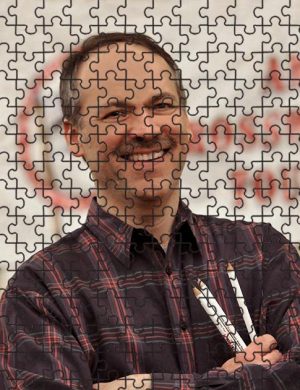Puzzling Through Puzzling Times: An Interview With NYT Crossword Editor Will Shortz

By Ellie Grueskin
I recently interviewed Will Shortz, crossword puzzle editor of The New York Times and all-around puzzle connoisseur, about his favorite puzzles in times of quarantine and normalcy alike. Shortz, an avid ping-pong player and Westchester resident, also owns and operates the Westchester Table Tennis Center in Pleasantville.
Q1: What is it about puzzles that makes them such a valuable quarantine activity?
Puzzles serve as a diversion from whatever is bothering you; drugs can do that too, but puzzles are empowering and beneficial to the mind. By completing puzzles, you’re not just filling time, but you’re also making yourself a better person.
Q2: You helped bring KenKen, the Japanese math puzzle, into the Times about a decade ago and declare it as “the most addicting puzzle since Sudoku.” What about KenKens captivated you?
With a tough KenKen, or problem of any sort, you struggle through the tough part and at the end, you rush to finish the last squares – at which point you have an endorphin rush.
Q3: I know your longest-running puzzle is the Crossword. How does this compare to KenKens?
KenKen balances the crossword very well. While people who like word and math puzzles are different types of solvers, both types like to use their minds to solve puzzles. The solving process is similar in that in involves filling in squares, figuring out a strategy or hint, and finishing with a sense of completion.
Q4: I see that you’ve just introduced two new puzzles to the daily puzzle section on page A2. Who designed these puzzles and how will they add to the existing KenKen and Crossword offerings?
The first one is called “Two Not Touch” – it is a grid-based logic puzzle designed by Jim Bumgardner and has some similarities to KenKen. The second, featured right below, is my very own word puzzle.
Q5: Do you have a favorite board game or non-newspaper puzzle?
My all-time favorite game is Boggle. I have beaten almost everyone at it.
Q6: Any final thoughts?
The Times was the final major publication to withhold from publishing a daily Crossword. After Pearl Harbor and the start of US involvement in World War II – in February, 1942 – they introduced the puzzle because they knew that people would need an intelligent diversion. I think it is appropriate that they are adding more puzzles right now.
Ellie Grueskin is an avid puzzler and KENKEN champion. She is currently a sophomore at Harvard University studying economics.

Examiner Media – Keeping you informed with professionally-reported local news, features, and sports coverage.
